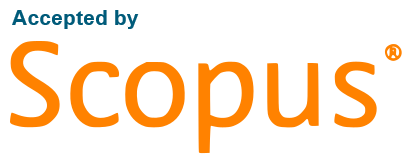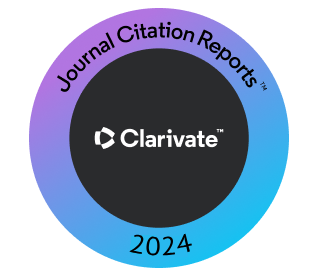Enhancing Cancer Diagnosis
A Hybrid Level-Set and Edge Detection Approach for Accurate Medical Image Segmentation
DOI:
https://doi.org/10.14500/aro.11942Keywords:
Cancer detection, Computer-aided diagnosis, Edge detection techniques, Level-set method, Medical image segmentationAbstract
Early diagnosis of cancer is crucial for improved patient results. With the aim of improving the effectiveness of cancer diagnosis, this paper introduces a new proposed method, computer-aided diagnosis, utilizing the level-set algorithm based on the edge detection approach for medical image segmentation. To assess the performance of our method, it was proven on a highly varied dataset that comprised liver cancer, Magnetic Resonance Imaging (MRI) brain cancer, and dermoscopy color images. By effectively integrating edge information into the level-set evolution process, the proposed method achieved impressive results. For liver cancer images, we obtained an accuracy of 0.9913, a sensitivity of 0.9165, and a Dice coefficient of 0.8820. Similarly, for dermoscopy color images, the method achieved an accuracy of 0.9979, a sensitivity of 0.9301, and a Dice coefficient of 0.9301. In the case of MRI images, the method demonstrated an accuracy of 0.9933, a sensitivity of 0.8591, and a Dice coefficient of 0.8591. The proposed method outperforms traditional techniques such as Simulated Annealing combined with Artificial Neural Network and Fuzzy Entropy with Level Set thresholding. This method demonstrates superior segmentation accuracy and robustness. By enabling precise identification of cancerous regions, this approach supports early diagnosis, reduces misdiagnosis, and enhances treatment planning, offering significant potential for improving cancer care and patient results.
Downloads
References
Al-Ayyoub, M., Abu-Dalo, A.M., Jararweh, Y., Jarrah, M., and Sa’d, M.A., 2015. A GPU-based implementations of the fuzzy C-means algorithms for medical image segmentation. The Journal of Supercomputing, 71, pp.3149-3162. DOI: https://doi.org/10.1007/s11227-015-1431-y
Aziz, M.H., and Abdulla, A.A. 2023. Computer-aided diagnosis for the early breast cancer detection. UHD Journal of Science and Technology, 7, pp.7-14. DOI: https://doi.org/10.21928/uhdjst.v7n1y2023.pp7-14
Aziz, S.A., Hawbani, A., Wang, X., Abdelhamid, T., Maolood, I.Y., Alsamhi, S., and Ismail, A., 2023. Improving Brain MRI Image Segmentation Quality: A Hybrid Technique for Intensity Inhomogeneity Correction. In: 34th Conference of Open Innovations Association (FRUCT). IEEE, United States, pp.20-26. DOI: https://doi.org/10.23919/FRUCT60429.2023.10328152
Badar, T., Särkkä, S., Zhao, Z., and Visala, A., 2024. Rao-blackwellized particle filter using noise adaptive kalman filter for fully mixing state-space models. IEEE Transactions on Aerospace and Electronic Systems, 60, pp.6972-6982. DOI: https://doi.org/10.1109/TAES.2024.3409644
Bechar, A., Elmir, Y., Himeur, Y., Medjoudj, R., and Amira, A., 2024. Federated and Transfer Learning for Cancer Detection Based on Image Analysis. [arXiv preprint arXiv:2405.20126]. DOI: https://doi.org/10.1016/j.procs.2024.06.373
Canny, J., 1986. Acomputational approach to edge detection. IEEE Transactions on Pattern Analysis and Machine Intelligence, 8, pp.679-698. DOI: https://doi.org/10.1109/TPAMI.1986.4767851
Chan, H.P., Hadjiiski, L.M., and Samala, R.K., 2020. Computer‐aided diagnosis in the era of deep learning. Medical Physics, 47, pp.e218-e227. DOI: https://doi.org/10.1002/mp.13764
Chan, T.F., and Vese, L.A., 2001. Active contours without edges. IEEE Transactions on image Processing, 10, pp.266-277. DOI: https://doi.org/10.1109/83.902291
Chen, Y., Tagare, H.D., Thiruvenkadam, S., Huang, F., Wilson, D., Gopinath, K.S., Briggs, R.W., and Geiser, E.A. 2002. Using prior shapes in geometric active contours in a variational framework. International Journal of Computer Vision, 50, pp.315-328. DOI: https://doi.org/10.1023/A:1020878408985
Elizângela, D.S.R., Fátima, N.S.DM., Regis, C.P.M., Chagas, J.V.S., Guimarães, M.T., Santos, L.O., Medeiros, A.G., and Peixoto, S.A, 2021. Level set approach based on Parzen Window and floor of log for edge computing object segmentation in digital images. Applied Soft Computing, 105, p.107273. DOI: https://doi.org/10.1016/j.asoc.2021.107273
El-Baz, A., Beache, G.M., Gimel’ Farb, G., Suzuki, K., Okada, K., Elnakib, A., Soliman, A., and Abdollahi, B., 2013. Computer‐aided diagnosis systems for lung cancer: Challenges and methodologies. International Journal of Biomedical Imaging, 2013, p.942353. DOI: https://doi.org/10.1155/2013/942353
Friedrich, T., Kötzing, T., Krejca, M.S., and Sutton, A.M., 2016. The compact genetic algorithm is efficient under extreme gaussian noise. IEEE Transactions on Evolutionary Computation, 21, pp.477-490. DOI: https://doi.org/10.1109/TEVC.2016.2613739
Halalli, B., and Makandar, A., 2018. Computer aided diagnosis-medical image analysis techniques. Breast Imaging, 85, p.109. DOI: https://doi.org/10.5772/intechopen.69792
Hemanth, D.J., Anitha, J., and Balas, V.E., 2015. Performance improved modified Fuzzy C-Means algorithm for image segmentation applications. Informatica, 26, pp.635-648. DOI: https://doi.org/10.15388/Informatica.2015.68
Hosseini, S.H., Monsefi, R., and Shadroo, S., 2024. Deep learning applications for lung cancer diagnosis: Asystematic review. Multimedia Tools and Applications, 83, pp.14305-14335. DOI: https://doi.org/10.1007/s11042-023-16046-w
Jaganathan, P., and Kuppuchamy, R., 2013. A threshold fuzzy entropy based feature selection for medical database classification. Computers in Biology and Medicine, 43, pp.2222-2229. DOI: https://doi.org/10.1016/j.compbiomed.2013.10.016
Kadhim, Y.A., Khan, M.U., and Mishra, A., 2022. Deep learning-based computeraided diagnosis (cad): Applications for medical image datasets. Sensors (Basel), 22, p.8999. DOI: https://doi.org/10.3390/s22228999
Kass, M., Witkin, A., and Terzopoulos, D., 1988. Snakes: Active contour models. International Journal of Computer Vision, 1, pp.321-331. DOI: https://doi.org/10.1007/BF00133570
Khaliki, M.Z., and Başarslan, M.S., 2024. Brain tumor detection from images and comparison with transfer learning methods and 3-layer CNN. Scientific Reports, 14, p.2664. DOI: https://doi.org/10.1038/s41598-024-52823-9
Latha, C., and Perumal, D., 2020. Segmentation of brain tumour MR images in soft computing techniques. Journal of Theoretical and Applied Information Technology, 98, p.3164-3171.
Latha, C., and Perumal, K., 2020. Brain tumour segmentation using genetic and ant colony. International Journal of Advanced Research in Engineering and Technology, 11, pp.1643-1654.
Maolood, I.Y., 2013. Fuzzy C-means Clustering Algorithm with Level Set for MRI Cerebral Tissue Segmentation. Universiti Teknologi Malaysia, Malaysia.
Maolood, I.Y., Al-Salhi, Y.E.A., Alresheedi, S., Ince, M., Li, T., and Lu, S.F., 2018a. Fuzzy C-Means Thresholding for a Brain MRI Image Based on Edge Detection. In: 2018 IEEE 4th International Conference on Computer and Communications (ICCC). IEEE, pp.1562-1566. DOI: https://doi.org/10.1109/CompComm.2018.8780890
Maolood, I.Y., Al-Salhi, Y.E.A., and Lu, S., 2018b. Thresholding for medical image segmentation for cancer using fuzzy entropy with level set algorithm. Open Medicine, 13, pp.374-383. DOI: https://doi.org/10.1515/med-2018-0056
Mercaldo, F., Brunese, L., Martinelli, F., Santone, A., and Cesarelli, M., 2023. Object detection for brain cancer detection and localization. Applied Sciences, 13, pp.9158. DOI: https://doi.org/10.3390/app13169158
Osher, S., and Sethian, J.A., 1988. Fronts propagating with curvature-dependent speed: Algorithms based on Hamilton-Jacobi formulations. Journal of Computational Physics, 79, pp. 12-49. DOI: https://doi.org/10.1016/0021-9991(88)90002-2
Pei, H.X., Zheng, Z.R., Wang, C., Li, C.N., and Shao, Y.H., 2017. D-FCM: Density based fuzzy c-means clustering algorithm with application in medical image segmentation. Procedia Computer Science, 122, pp.407-414. DOI: https://doi.org/10.1016/j.procs.2017.11.387
Shao, J., Luan, S., Ding, Y., Xue, X., Zhu, B., and Wei, W., 2024. Attention connect network for liver tumor segmentation from CT and MRI images. Technology in Cancer Research and Treatment, 23, p.1-11. DOI: https://doi.org/10.1177/15330338231219366
Sharma, P., Malik, S., Sehgal, S., and Pruthi, J., 2013. Computer aided diagnosis based on medical image processing and artificial intelligence methods. International Journal of Information and Computation Technology, 3, pp.887-892.
Singh, L., Janghel, R.R., and Sahu, S.P., 2021. SLICACO: An automated novel hybrid approach for dermatoscopic melanocytic skin lesion segmentation. International Journal of Imaging Systems and Technology, 31, pp.1817-1833. DOI: https://doi.org/10.1002/ima.22591
Suryawanshi, S., and Patil, S.B., 2024. Brain tumor detection using YoloV5 and faster RCNN. International Journal of Intelligent Systems and Applications in Engineering, 12, pp.335-342.
Virupakshappa, S., Veerashetty, S., and Ambika, N., 2022. Computer-aided diagnosis applied to MRI images of brain tumor using spatial fuzzy level set and ANN classifier. Scalable Computing: Practice and Experience, 23, pp.233-249. DOI: https://doi.org/10.12694/scpe.v23i4.2024
Win, K.Y., Choomchuay, S., Hamamoto, K., Raveesunthornkiat, M., Rangsirattanakul, L., and Pongsawat, S., 2018. Computer aided diagnosis system for detection of cancer cells on cytological pleural effusion images. BioMed Research International, 2018, p.6456724. DOI: https://doi.org/10.1155/2018/6456724
Xie, Y., Zhang, J., Xia, Y., and Shen, C., 2020. A mutual bootstrapping model for automated skin lesion segmentation and classification. IEEE Transactions on Medical Imaging, 39, pp.2482-2493. DOI: https://doi.org/10.1109/TMI.2020.2972964
Yang, W., Chen, X.D., Wang, H., and Mao, X., 2024. Edge detection using multi-scale closest neighbor operator and grid partition. The Visual Computer, 40, pp.1947-1964. DOI: https://doi.org/10.1007/s00371-023-02894-y
Yin, J., Chang, H., Wang, D., Li, H., and Yin, A., 2021. Fuzzy C‐means clustering algorithm‐based magnetic resonance imaging image segmentation for analyzing the effect of Edaravone on the vascular endothelial function in patients with acute cerebral infarction. Contrast Media and Molecular Imaging, 2021, p.4080305. DOI: https://doi.org/10.1155/2021/4080305
Zhu, Z., Sun, M., Qi, G., Li, Y., Gao, X., and Liu, Y., 2024. Sparse dynamic volume TransUNet with multi-level edge fusion for brain tumor segmentation. Computers in Biology and Medicine, 172, p.108284. DOI: https://doi.org/10.1016/j.compbiomed.2024.108284
Downloads
Published
How to Cite
Issue
Section
License
Copyright (c) 2025 Ismail Y. Maolood

This work is licensed under a Creative Commons Attribution-NonCommercial-ShareAlike 4.0 International License.
Authors who choose to publish their work with Aro agree to the following terms:
-
Authors retain the copyright to their work and grant the journal the right of first publication. The work is simultaneously licensed under a Creative Commons Attribution License [CC BY-NC-SA 4.0]. This license allows others to share the work with an acknowledgement of the work's authorship and initial publication in this journal.
-
Authors have the freedom to enter into separate agreements for the non-exclusive distribution of the journal's published version of the work. This includes options such as posting it to an institutional repository or publishing it in a book, as long as proper acknowledgement is given to its initial publication in this journal.
-
Authors are encouraged to share and post their work online, including in institutional repositories or on their personal websites, both prior to and during the submission process. This practice can lead to productive exchanges and increase the visibility and citation of the published work.
By agreeing to these terms, authors acknowledge the importance of open access and the benefits it brings to the scholarly community.
Accepted 2025-02-03
Published 2025-02-17















 ARO Journal is a scientific, peer-reviewed, periodical, and diamond OAJ that has no APC or ASC.
ARO Journal is a scientific, peer-reviewed, periodical, and diamond OAJ that has no APC or ASC.